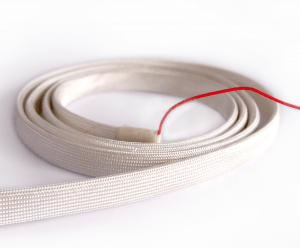
Vibration is commonly a back & forth movement, or oscillation, of machines & components in motor-powered equipment. Vibration in industrial equipment can be a sign, or cause, of a problem, or it can be connected with normal operation.
For example, oscillating sanders & vibratory tumblers rely on vibration to function. Internal combustion engines & gear drives, on the other hand, encounter a certain amount of unavoidable vibration.
In general, mechanical equipment is engineered to avoid vibration rather than create it. This article focuses on equipment engineered to evade vibration.
Vibration can mean a problem, & if left unchecked can cause breakage or hastened deterioration of the machinery.
Electric motor vibration can be caused by one or more circumstances at any given time, the most common being imbalance, misalignment, wear & looseness.
- Unevenness – A “heavy spot” in a rotating part will cause a vibration when the unbalanced weight revolves around the machine’s axis, generating a centrifugal force. The imbalance could be produced by manufacturing faults (machining errors, casting flaws) or maintenance problems (deformed or dirty fan blades, missing balance weights). As machine speed increases, the consequences of imbalance become more prominent. Imbalance can seriously reduce bearing life as well as cause excessive machine vibration.
- Misalignment /shaft runout – Vibration can occur when machine shafts are out of line. Angular misalignment happens when the axes of (for example) a motor & pump are not equal. When the axes are parallel but not precisely aligned, the condition is known as parallel misalignment. Misalignment can be caused through assembly or develop over time, due to thermal expansion, components shifting or incorrect reassembly after maintenance. The vibration can be radial or axial (in line with the axis of the machine) or both.
- Wear – As parts such as a ball or roller bearings, drive belts or gears grow worn, they might cause motor vibration. When a roller bearing race has pitted, for example, the bearing rollers will create a vibration each time they travel over the broken area. A gear tooth that is majorly chipped or worn, or a drive belt that is breaking down, can also create vibration.
- Looseness – Vibration that might otherwise go overlooked can become obvious & destructive if the part that is vibrating has loose bearings or is loosely connected to its mounts. Such looseness might or might not be produced by the underlying vibration. Whatever its cause, looseness can provide any vibration present to cause damage, such as additional bearing wear, wear & fatigue in gear mounts & other parts.
Vibration effects
Vibration can hasten machine wear, drain excess power, & cause equipment to be driven out of service, resulting in unplanned downtime. Other results of vibration include safety issues & diminished working conditions. When measured & investigated properly, however, vibration can play a significant role in preventive maintenance plans. It can serve as an indicator of machine condition & allow plant maintenance experts to act before damage or accident strike.
Consider these variables when examining vibration:
- Direction, such as radial or axial
- Amplitude, severity
- Frequency, shown in cycles per minute (CPM) or Hertz (Hz)—one Hz equals one second or 60 CPM
Plant maintenance specialists need to be able to distinguish between normal & unusual vibration. A good perception of vibration basics & the right tool is all a plant maintenance technician requires to quickly & reliably get to the root of vibration-related issues, including discovering the root cause & severity, then discovering the need for service or repair.
Vibration Sensors & Testers
Vibration sensors & software are typically created for monitoring machine condition over the long term & require special training.
Many industrial maintenance teams work with strict limits on their budgets & time; the sources required for the training & implementation connected with long-term vibration analysis applications may simply be out of reach.
This is where our vibration sensors step in, and one reason why it is such a valuable tool.
Click here to see our quality vibration sensor products.
Our Vibration Sensors are designed to help maintenance professionals discover machine condition & get to the original cause of any problems swiftly.
It fills the gap that exists among high-end, complex vibration analysers & low-end vibration pens, which decrease accuracy for cost & ease of use.
Our electric motor vibration sensors offer the diagnostic capacities of the higher-end analysers along with the speed & suitability of the lower-end testers, at a sensible price.
Plant maintenance technicians need complete diagnostic & problem-solving tools to recognise problems, suggest repairs & give context-sensitive guidance & tips in real-time.
The precision of our vibration sensors allows maintenance crews to act when required to keep mechanical equipment in peak form & to keep equipment productive.



